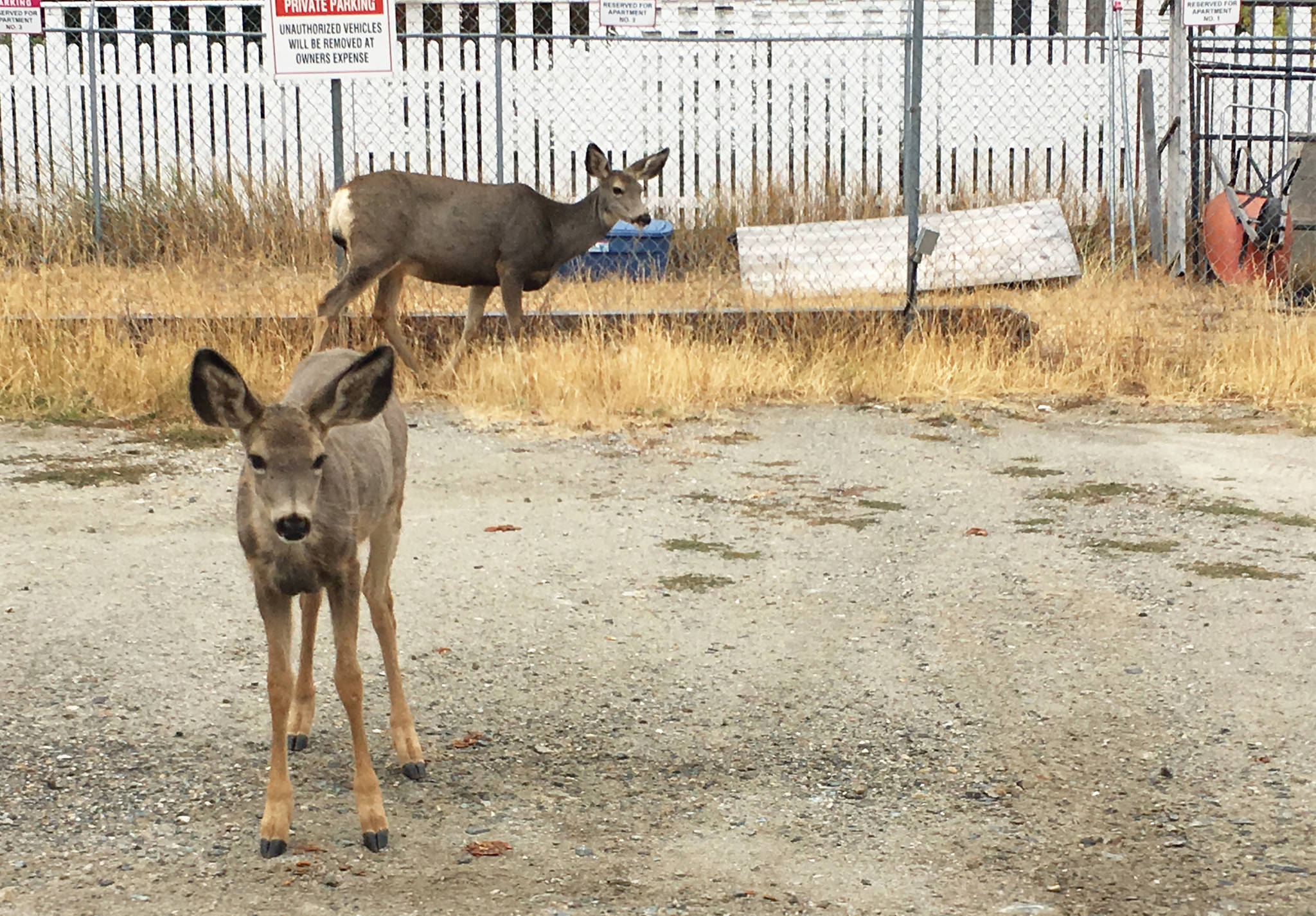Kimberley Bylaw Enforcement has been working with the BC Conservation Officer Service to educate the community about the issues with feeding deer.
In February of this year, Bylaw heard seven complaints of deer feeding, issued three warnings and one ticket. In January it was a similar situation, with six complaints and six subsequent warnings.
Bylaw Enforcement and Animal Control Officer Kim Tuff explained that the ticket issued in February was due to the offender not complying. She says that instances of feeding have increased.
At a regular Council Meeting on Monday, March 12, Council discussed the situation, following on the heels of the Mule Deer Translocation that took place a week prior.
City Councillor Darryl Oakley, who sits on the Kimberley Urban Deer Advisory Committee, says that there is an urgency to work with the community to educate residents about not feeding deer.
“It’s become apparent to us, when the Biologists were in town working on translocating deer, they found a lot of places that feeding is rampant,” Oakley said. “It has really become a big problem again which is really unfortunate. The Biologists have been talking with FLNRO (Ministry of Forests, Lands, and Natural Resource Operations), and the Conservation Officers have been chatting with the Bylaw Officers; it’s a huge problem right now.”
When he was in town for the translocation, Wildlife Biologist Ian Adams stated that there are multiple issues with feeding deer including their heath and increased population.
“It doesn’t help them [deer],” said Adams. “When you get artificially large numbers, like you do in town, if one of them is sick it spreads pretty quickly.”
He added that deer have a chamber in their digestive system for food storage, which is called a rumen. When deer are fed oats, corn, or other substances that are foreign to them, their rumen becomes filled with said substance and they cannot process it.
Senior Environmental Specialist for Vast Resource Solutions Aden Stewart says that when spring comes and the deer’s regular food sources become more abundant, they don’t have room for it and they can “starve with a full belly”.
Putting feed out doesn’t just cause issues for deer, says Adams, but it can also be harmful for other wildlife such as turkeys, and can cause issues with bears that will soon be coming out of hibernation.
Oakley says he has spoken with a few folks so he can try to better understand the concern.
“A big piece is they are just seeing so much snow, and they’re hugely compassionate, big hearted people, but you cannot feed these animals. It’s not helping them, it’s making it much worse for them, especially [when fed] dry oats, it’s just really hard on them,” Oakley explained. “Conservation Officers have actually been visiting homes because of this problem, to try to get people to back away from it. I was at one home last week and the residents were crying. They were so upset about it. It’s a really unfortunate thing, but people have got to be vigilant in not feeding them. Let those animals be, it’s wildlife, they are perfectly capable and adapted to this.”
Councillor Sandra Roberts agreed, saying that the more the deer are fed, the sicker they get.
“What they are being fed is making them sick and it’s not the nourishment they need to have, it’s not good for them,” said Roberts.
Mayor Don McCormick added that it also adds to the increase in population.
“The real irony here is the more they are fed, the more deer we get and the more urgency there is to remove the deer,” said McCormick.
Corporate Officer Maryse Leroux says that it’s important to report deer feeding to Bylaw.
“We definitely encourage people to report it if they see their neighbours feeding deer, because that’s the only way the Bylaw Enforcement Officer can actually get in contact with them,” said Leroux. “I was really surprised to hear from the biologists that it’s happening all over town because so far we’ve received seven complaints for three different properties.”
Councillor Oakley replied saying that when Biologists described the feeding spots, they were typically very well protected and hidden, but known by the deer.
“It’s important to remember that our Bylaw officer is in a difficult position because she needs to not just see food on the ground, but it has to be an overt act of feeding the deer before she is comfortable in actually handing out tickets,” said McCormick.
Fines for feeding deer or permitting deer to be fed on your property can range from $50 for the first offence, to $500 for each subsequent offence. More information can be found on the City’s website under Community > Safety, Health & Environment > Wildlife.
